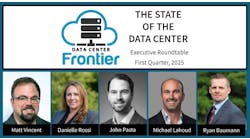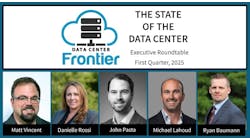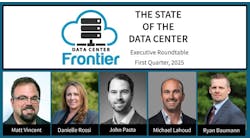The Data Center Frontier Executive Roundtable features insights from industry executives with lengthy experience in the data center industry. Here’s a look at the insights from Kevin Imboden, Global Director of Market Research and Competitive Intelligence for EdgeConneX.
Kevin Imboden joined EdgeConneX in 2022 after a decade and a half of study of the commercial real estate market for both the data provider and brokerage realms. He has produced a variety of research in primary and emerging markets, conducted both local and international market analyses, and appeared on many podcasts and at speaking engagements worldwide.
Kevin has a strong knowledge of the global data center industry along with international capital flows and macroeconomics, and frequently deciphers both local and global market trends, current and future. He is proudly co-chair of the DIEB (Diversity, Inclusion, Equity, Belonging) Committee at EdgeConneX and has a combined degree in Business Management and Economics from the University of California at Santa Cruz.
Here's the full text of Kevin Imboden's insights for our Executive Roundtable:
Data Center Frontier: As data center builds and leasing in locations such as No. Va. And Silicon Valley remain increasingly challenged, the prognosis for industry growth in 2nd and 3rd tier U.S. data center markets continues to improve. What are your top 3 most attractive 2nd or 3rd tier data center markets in terms of power, cost, construction, operational, geographic or other advantages?
Kevin Imboden, EdgeConneX: While construction in core markets has been complex for quite some time due to highly constrained power and a lack of attractive sites, the recent outpouring of workloads for artificial intelligence has further scaled the problem. What was once a 20-megawatt size issue is now a 200-megawatt major problem!
The factors that drive these deployments have also shifted; local- and state-level incentives take precedence thanks to the amount spent on each build, as does power availability and cost per kilowatt hour rather than nearby population or fiber density. Markets such as Quincy, Washington, play well for this; the low cost of renewable power and affordable land make this an exceptionally attractive choice.
Another option would be any of several cities across the Midwest that have stranded industrial power from prior industries and a central location; consider Detroit, St. Louis, Indianapolis, or Columbus as examples.
Another type of city that has grown in importance is one that has robust connectivity to emerging markets; Miami has the highest number of undersea cables in the United States, leading to the growing Latin America region.
Data Center Frontier: Given the rapid acceleration of AI technology momentum this year, what’s your 12-24 month outlook for planning or spending by hyperscale and colocation providers on any type of data center AI technology upgrades related to workload management and demand uptake from enterprise and consumer cloud customers?
Kevin Imboden, EdgeConnex: Second-quarter results for Nvidia provide the answer: there are a record number of GPUs being purchased for AI workloads at a rate that will only be slowed by the ability to produce them!
As an industry, this will provide a strong incentive for change, with hyperscalers and colocation providers alike required to re-engineer their facilities for denser workloads beyond anything seen previously.
Guidance from public companies is a good indicator, with several explicitly outlining higher capital expenditure in the coming months to account for these requirements.
Expect continuing spend over the next two years, with optimization following as training leads to inference and a change in structure.
Data Center Frontier: The Russian author Leo Tolstoy once famously wrote, "Happy families are all alike; every unhappy family is unhappy in its own way." Across the spectrum of colocation and hyperscale data center construction, expansion and operations, there’s a plurality of investors, builders and providers. What does each party optimally look for in the other to ensure a ‘happy family’? On the flip side, what factors could make for an ‘unhappy family?’
Kevin Imboden, EdgeConneX: What makes a happy data center ecosystem is what makes every business in every industry happy: shared expectations and on-time results.
Supply chain disruptions and a lack of targeting and/or strategy have led to fallouts among recent data center partnerships; had there been clarity from the beginning, and a detailed go-forward plan, this unhappiness could have been avoided.
Keep pace with the fast-moving world of data centers and cloud computing by connecting with Data Center Frontier on LinkedIn, following us on X/Twitter and Facebook, and signing up for our weekly newsletters using the form below.

Matt Vincent
A B2B technology journalist and editor with more than two decades of experience, Matt Vincent is Editor in Chief of Data Center Frontier.






